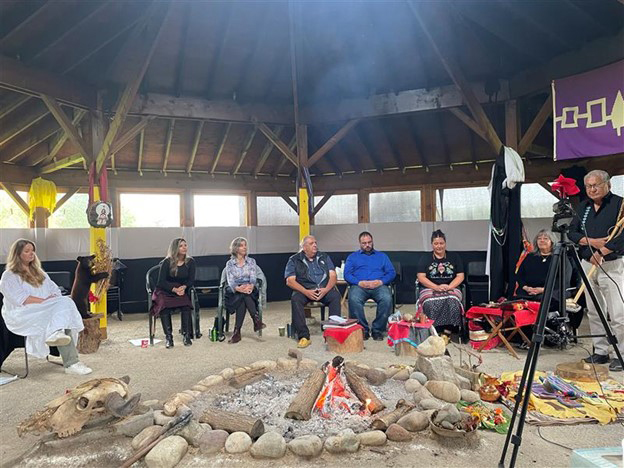Old Rock Day is recognized annually on January 7 to encourage people to learn about the Earth’s history through rocks and celebrate the western scientists and Indigenous Knowledge Keepers who help us understand what these rocks are telling us.
At the Nuclear Waste Management Organization (NWMO), our geologists and geoscientists are studying the rock deep underground through activities such as borehole drilling in the South Bruce and Ignace areas to confirm that the rocks are suitable for hosting a deep geological repository to store used nuclear fuel. This work is significant because through the rock we also learn about the properties of water deep underground.
We are looking at the geological history of these specific locations. For example, in the Ignace area, we are studying an approximately 2.7-billion-year-old igneous granitoid rock unit of the stable Canadian Shield, known as the Revell batholith. All indications to date suggest there is little water in the rock mass.
“So far, everything we have found through our remote sensing and surface studies, and borehole drilling, shows that this rock is suitable for hosting a deep geological repository that will protect people and the environment including water, for generations to come,” said Andy Parmenter, Section Manager, Geoscientific Integration and Synthesis.
The site we are studying in South Bruce is underlain by sedimentary rocks of the Michigan basin, which range in age from approximately 500 to 250-million-year-old. The sedimentary rocks are near-horizontally layered, undeformed shale and limestone formations of large lateral extent. The proposed host rock formation beneath South Bruce – called the Cobourg Formation – is a strong, argillaceous (shaley) limestone with very low permeability which means any water present can only move very slowly through it. What does exist can take a million years or more to move 10 metres through the rock.
“In the South Bruce area, if the rock at the proposed repository depth of approximately 680 m and the water within it has not been disturbed by geological processes in the last 200 million years, then it is highly unlikely that it will be impacted over the next million years,” said Mr. Parmenter.
Indigenous Knowledge Keepers, including our Indigenous Relations, Engagement teams and our Council of Elders and Youth help us further expand on this western science way of knowing.
Indigenous peoples have a deep connection to the rock and the water that exists within it. Rocks have a spirit and story to tell, and it is our responsibility to listen and gain a deeper understanding of the memory they hold.
“Within Indigenous worldview, the rocks are referred to as grandfathers. This is a way of describing the generational knowledge they carry. In the context of geoscience, the NWMO’s approach to site characterization activities has been expanded by the knowledge that both western science and Indigenous Knowledge rely on the rocks (grandfathers) to pass on that knowledge and inform the NWMO’s work,” said Jessica Perritt, Section Manager, Indigenous Knowledge & Reconciliation.
When we follow the water and rock, it reveals life. How rock and water survive, gives us hints of history, providing valuable information to inform our work.
Happy Old Rock Day!

